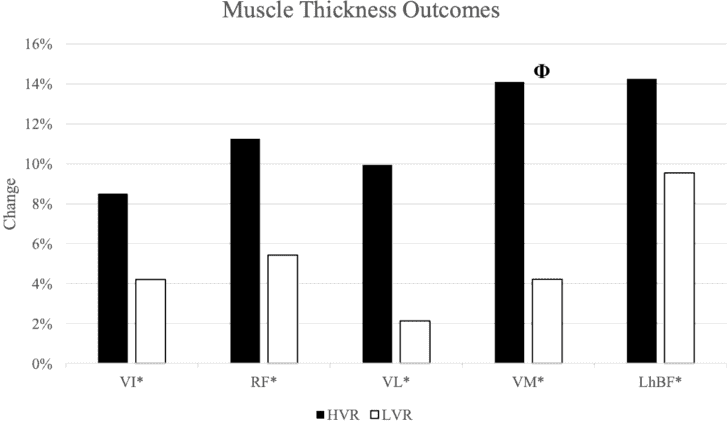The debate about training volume still prevails. This is partly because this training variable is difficult to research in practice. A recent study, however, manages to imitate the practice quite well. Read below how the study was set up and of course what the findings are.
We are talking about a study by Dellatolla et al. from November last year. As mentioned, one of the many studies into training volume among strength athletes, but for several reasons one that stands out positively in terms of design.
THE SET-UP
The study involved 9 strength athletes who completed a training program for the legs (quadriceps and hamstrings) for a period of 6 weeks. One part of the subjects trained with a relatively low volume, evolving from 5 to 9 working sets (hamstrings) and 10 to 14 working sets (quadriceps), the other part used a high volume, namely 11-18 sets and 19-28 sets respectively.
PLUSES
Why is this study ‘better’ (read: more realistic) than many other studies into training volume?
- The subjects involved each had around six years of training experience, who also had to be able to squat at least 1.5 x body weight and deadlift 1.75 times. Most studies are done among beginners, who arrive with much less effort and volume than advanced ones;
- The subjects’ calorie intake was kept at the same level in relative terms;
- No fixed volume was used, but a build-up in volume over the six weeks (which apparently makes it more complicated, but that build-up was there in both groups so you can compare them just as well);
- There was progressive overload used, sets up or close to muscle failure were trained;
- Realistic intra-set rest times were used, ie from 3 to 5 minutes. Many studies use short rest periods, which means that high volume programs often do not perform well;
- The volume was optimally distributed over the week, with an adequate training frequency, which is also rare in these types of studies;
- The results were measured in several ways: the 3RM for strength, and DEXA, Bod Pod and Ultrasound for body composition.
THE RESULTS
After 6 weeks of a total of 18 brutal leg days, the high volume group recorded the best results. Compared to the low volume groups, they were much stronger on the squat and on the stiff-leg deadlift (not on the leg press, by the way).
But for us bodybuilders much more important: the high volume group, according to all measurements, built considerably more muscle mass than the low volume group. See figure below.
 The high volume group (HVR) built significantly more muscle mass than the low volume group (LVR). Source: Dellatolla et al., 2020 / Menno Henselmans.
The high volume group (HVR) built significantly more muscle mass than the low volume group (LVR). Source: Dellatolla et al., 2020 / Menno Henselmans.(OUR) CONCLUSIONS
Based on this one study, against the light of the already existing literature, we can cautiously draw some conclusions:
- Training volume plays a more important role the more training experience you have;
- Experienced bodybuilders (> 3 years of training experience) may benefit from higher training volumes: more sets, more gains;
- The condition is that you can recover enough of that volume;
- To this end, a smart spread of sets over the week is important, which is usually only possible if you use a high training frequency. If you can train ‘only’ three times a week, you will have to settle for less rapid muscle growth (but remember, your gains will not run away).
- It is not said that as an experienced strength athlete you should do 15-20 sets per muscle group per week, because in the study only the lower body was trained. The more muscle groups you train, the fewer sets you can logically do. 10-20 sets per muscle group per week seems to us a realistic starting point for the experienced bodybuilder.
In short: if you want fast(er) muscle growth, do more sets, provided you can recover from them.
The devil often lies in that ‘if’. This usually requires a high training frequency, so that, for example, you only do a maximum of 5 sets per muscle group per training. But of course your agenda and motivation have to allow that. Although that motivation is fine, we assume.